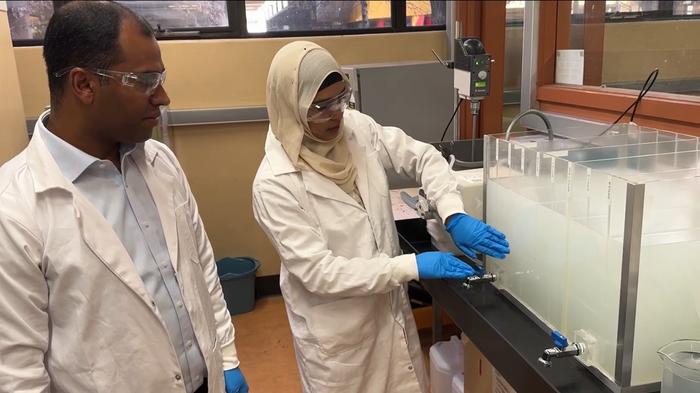They’re chunky, sticky, and a sewer system’s worst nightmare. Solid masses of fats, oils, and grease called fatbergs can gum up drains and sewers around the world and can be incredibly costly to remove and repair. For example, New York City spends roughly $18.8 million removing fatbergs each year.
Now, a new wastewater treatment system may help prevent them from building up in the first place. The prototype uses a redesigned grease interceptor and smart chemical treatment that work together to optimize how water flows. The experimental process is detailed in a study recently published in the journal ACS ES&T Water.
Fatbergs are usually made out of the fat, oil, and grease (FOG). FOG substances do not break down within the sewer system, and can often glom onto other objects that shouldn’t be flushed down the toilet, including baby wipes. All of those non-biodegradable objects stick together and then harden. The result? An almost immovable clog.
According to Johns Hopkins Bloomberg School of Public Health, sanitation engineers typically use high-powered water jets, saws, and pick-axes to break fatbergs into smaller pieces.This way, the pieces can be removed by hand or with an industrial vacuum. Clearing one fatberg can take an extraordinary amount of time and money. In 2019, a 40-ton fatberg in London took three weeks to clear with eight people working nine hours each day on the task.
To answer this growing plumbing problem, engineers at the Royal Melbourne Institute of Technology (RMIT) in Australia looked at fatberg prevention rather than removal.
“Traditional grease traps aren’t designed to catch the finer particles and emulsified fats in modern kitchen wastewater,” study co-author and civil engineer Biplob Pramanik said in a statement. “Our system targets all fat types, even hard-to-remove emulsified fats that slip through conventional traps.”

Their new design uses a series of physical barriers (called baffles) placed inside of a grease interceptors in drains. The interceptor slows wastewater flow while separating the larger fat particles from the water. A small dose of a common water treatment chemical called alum (aluminum sulfate) is added. The alum then clumps the smaller, suspended fats together for easy removal.
According to study co-author and civil engineer Nilufa Sultana, this new system works effectively even in real-world conditions that have high temperatures and detergent use.
“While traditional interceptors only remove around 40% of fats, our system achieved up to 98%—even when tested with actual kitchen wastewater,” Sultana said.
[ Related: The battle against fatbergs has a new weapon. ]
The team says that this technology could be scaled for use in kitchens of all sizes, even commercial kitchens, which are large contributors to fatbergs. It can also be retrofitted to existing grease management systems. If implemented in an already established grease management system, it could be a more cost-effective way to protect sewer infrastructure.
“Fat, oil and grease blockages can lead to sewage spills in our streets and waterways,” added co-author and chemical engineer Felicity Roddick. “This research shows we can stop the problem at its source, with a simple upgrade to the systems food businesses already use.”






